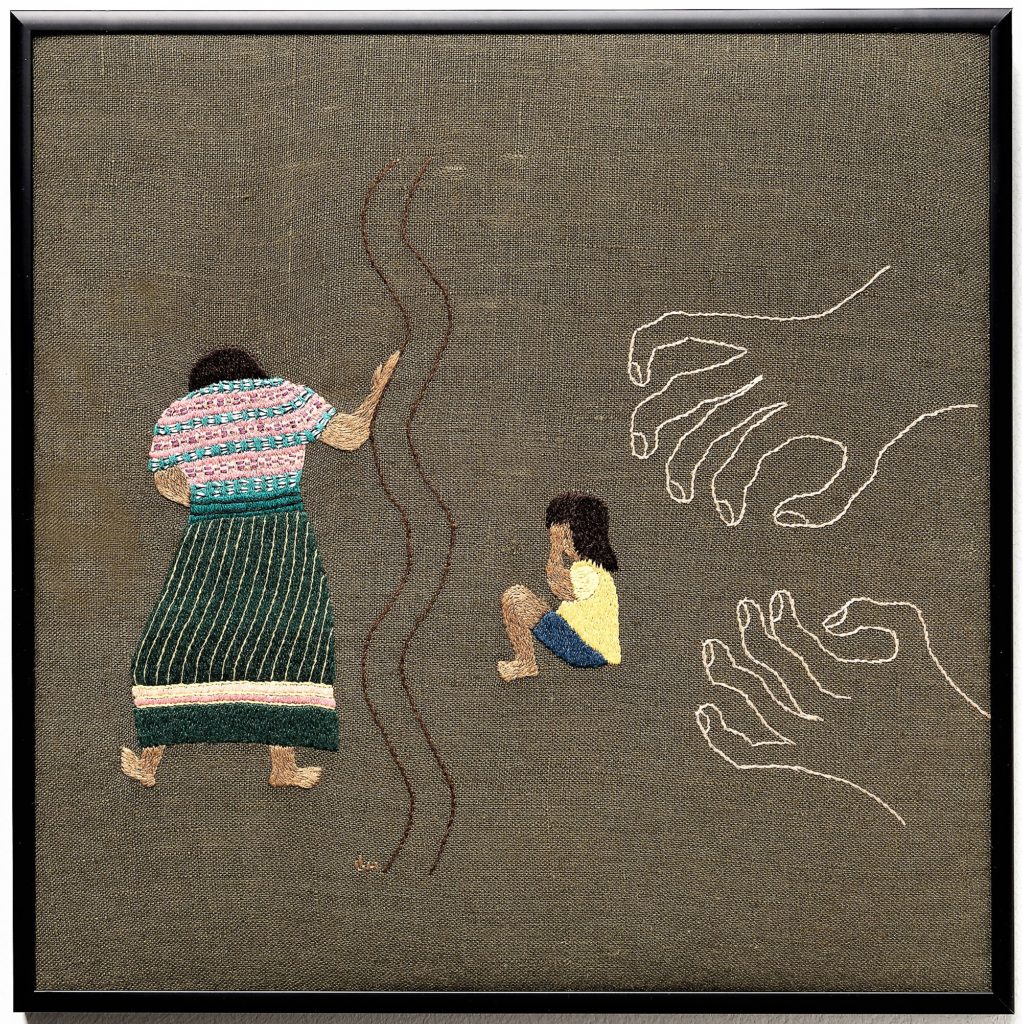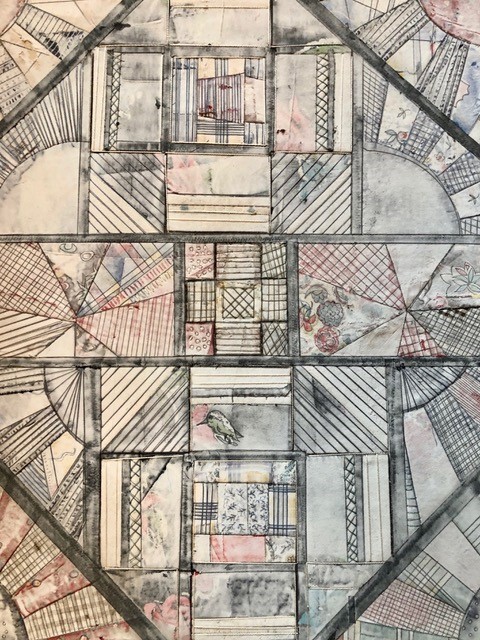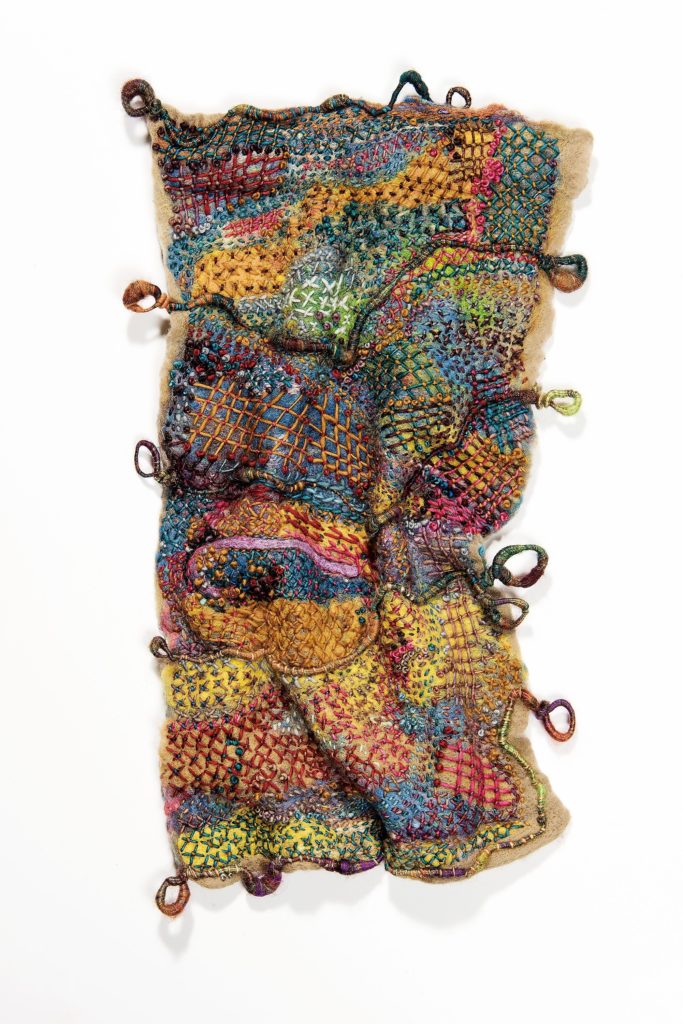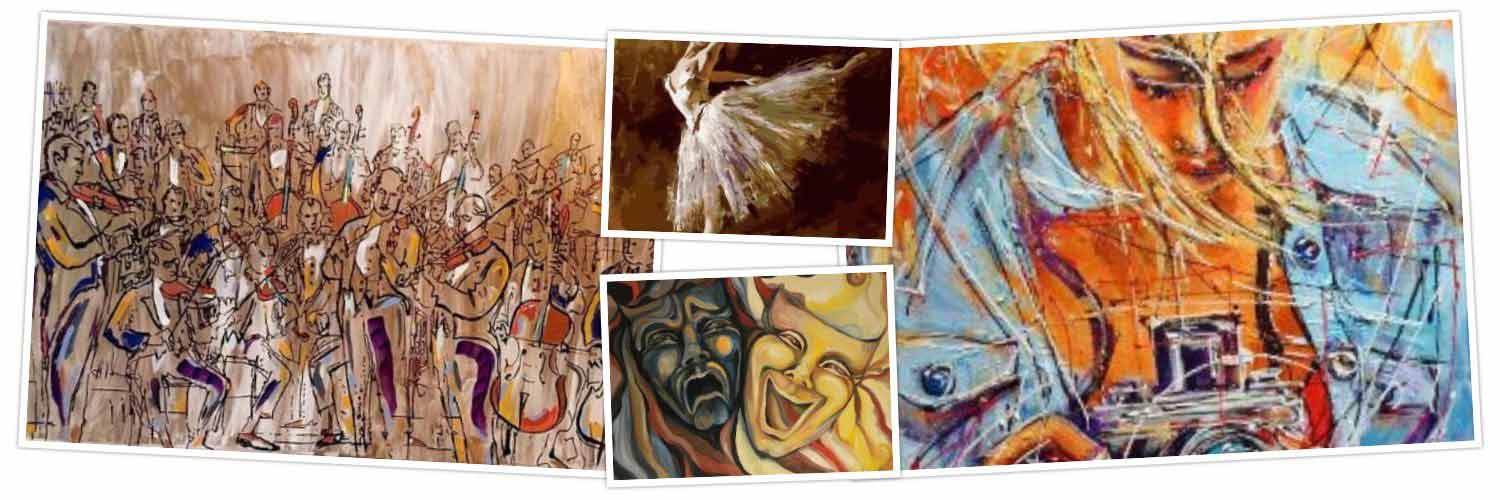The State of Hand Stitch
By JASMINA WELLINGHOFF, Editor –
Many contemporary artists are exploring new media through which to express themselves while others are discovering new ways to use traditional techniques and materials for the same purpose. An example of the latter is the use of hand stitching to create art which bears little resemblance to traditional embroidery.
A group of 11 such artists will be featured in “The State of Hand Stitch – New Embroidery by Texas Artists” opening June 5 at the UTSA Main Art Gallery, on the university’s 1604 campus.
“The basic techniques of traditional embroidery stitches – chain stitch, buttonhole stitch, running stitch, sattin stitch, cross stitch – remain the fundamental techniques of hand embroidery today,” said Kim Paxson, the exhibit organizer and one of the participating artists. “In fiber art, stitch refers to a single turn of loop of thread or yarn.”

In addition, the aim of the artists is very different. They are not after beautiful tapestries or fine clothing. They have things to say, both visually and thematically.
Paxson used to be a painter before discovering stitch art, which she describes as more intimate and more tactile. “It’s a quieter creative journey, a counterbalance to the loud, hectic life of today,” she noted, and, for her, a healthier medium. No allergy-causing chemicals. She often makes her own felt out of a variety of wool types and uses that as the “canvas” for her stitching. “I like the contrast between the movements required to make wool felt (a pretty physical process) and the quiet quality of stitching,” she wrote in her artist statement. “I am interested in conveying the artist’s hand as opposed to making perfect stitches. I like free-form sketching with thread and layering stitches on felt to create a more textural surface.”
Her piece, “In Need of Repair,” which is included in the show, shows a tightly stitched design of a broken hand, with fingers severed from the rest of the hand. It’s indeed in need of repair but not the kind provided by surgeons. What inspired her, she says, was concern about the deep divisions in our society. How do we move forward on the big issues if our hands are broken and we can’t do even simple tasks together?

Another participating artist is Lucia LaVilla-Havelin, who has been involved with textiles and fiber for some 40 years. She, too, speaks of her art as “peaceful, meditative and centering.” She likes to work in series, exploring certain contemporary themes or family narratives. She will show seven pieces this time, including an eloquent image of a mother and child separated by undulating lines that can easily be interpreted as a river and/or border. Her base fabric is linen, which she stretches on a loop before starting work on the image itself. Though she makes sketches of what she wants to create, the piece evolves more or less organically from idea to final version. Her other pieces in the show have been inspired by events in her own and her family’s life.
LaVilla-Havelin’s work has been exhibited throughout the country, won awards and appeared in magazines. It is also part of 40 private collections.

Overall, the styles and themes of the 11 participating artists cover a lot of ground, from the abstract and almost sculptural (Miki Rodriguez) to using clothing images to peel away “the public skin” represented by clothing to reveal “what is hidden and unspoken.” The latter is rendered in finely stitched words on the fabric of a dress, “the symbol of women” (Beth Cunningham).
Other included artists are Debbie Armstrong, Jane Dunnewold, Janis Hooker, Barbara Lugge, Mary Ruth Smith, Pamela Studstill and Sue Anne Sullivan, all of whom have impressive CVs. Dunnewold, for instance, will have a major solo retrospective exhibition at the San Antonio Art League Museum in the fall. In her statement, she describes herself as a “rebel” who “challenges what is art, what media can be used to make art, what references are acceptable, what can be stitched.” Mary Ruth Smith has exhibited internationally, in Ukraine, Uruguay, S. Korea, Hungary and France. And Pamela Studstill’s work is included in museum collections such as the Smithsonian Institution in Washington, D.C. and the Museum of Arts and Design in New York City.

After the UTSA exhibit closes in San Antonio, a smaller version of it will move to the Arnold Art Gallery in Mason, TX. The group also plans to exhibit together again at the Georgetown Art Center near Austin, in 2020.
The State of Hand Stitch, UTSA Main Art Gallery, June 5 – August 9, Art Building, 2nd floor, room 2.03.04’ Opening reception June 5, 5-7 p.m.

I look forward to seeing this show this evening!
Thank you for the informative article.
A surprising and powerful exhibit.
The stitches turn into brush strokes in these truly “painterly” pieces.
Great job of curating a rich and powerful show!
The best show of its kind…exploring embroidery as fine art.